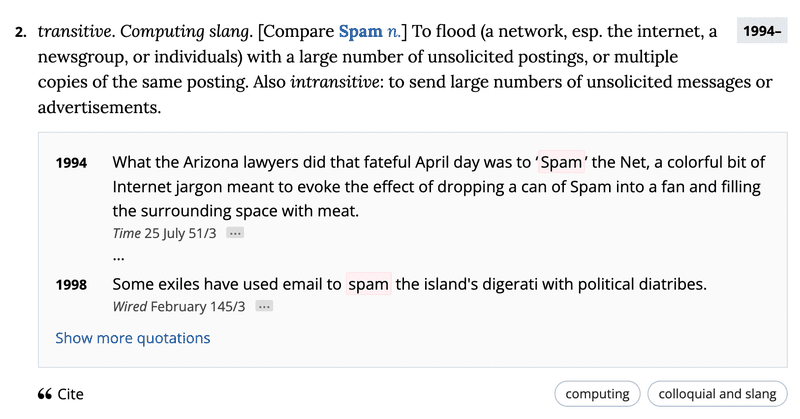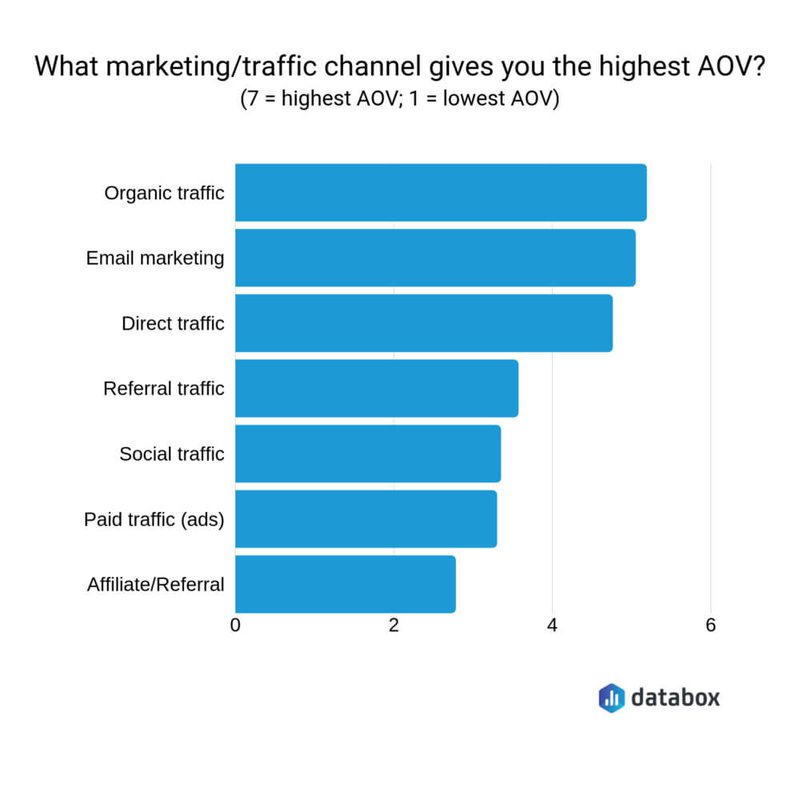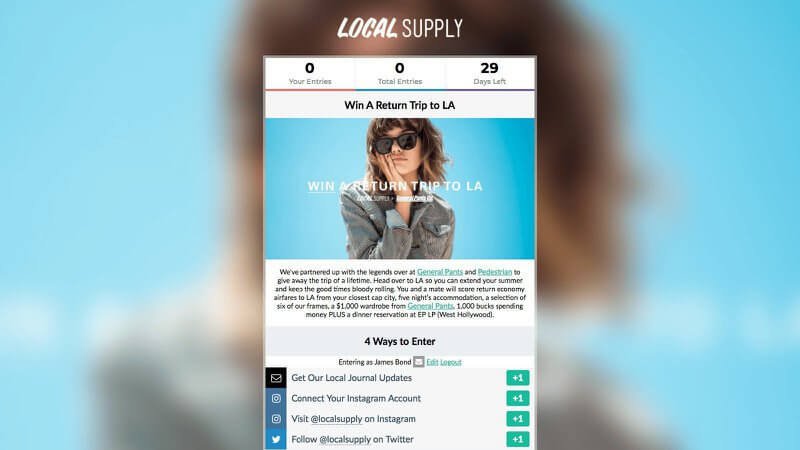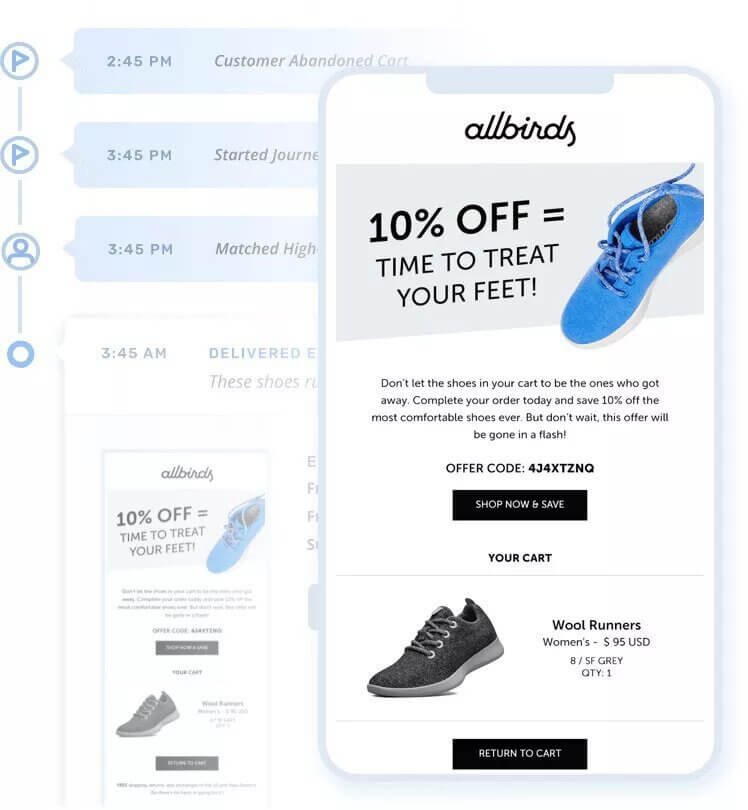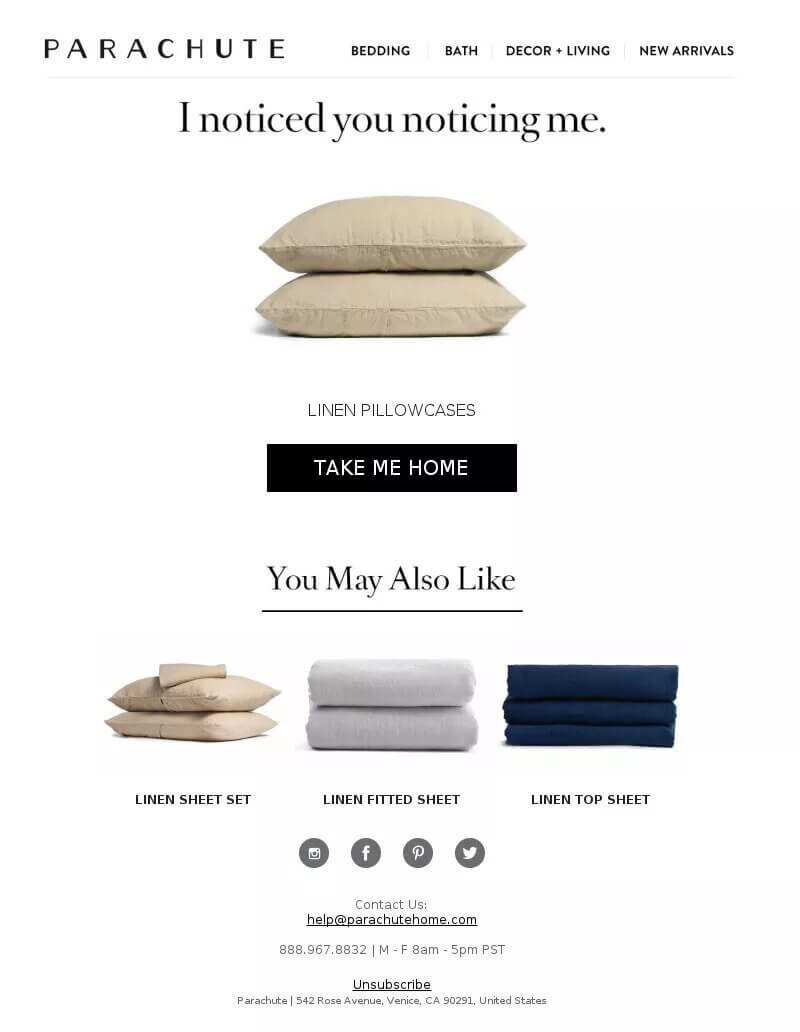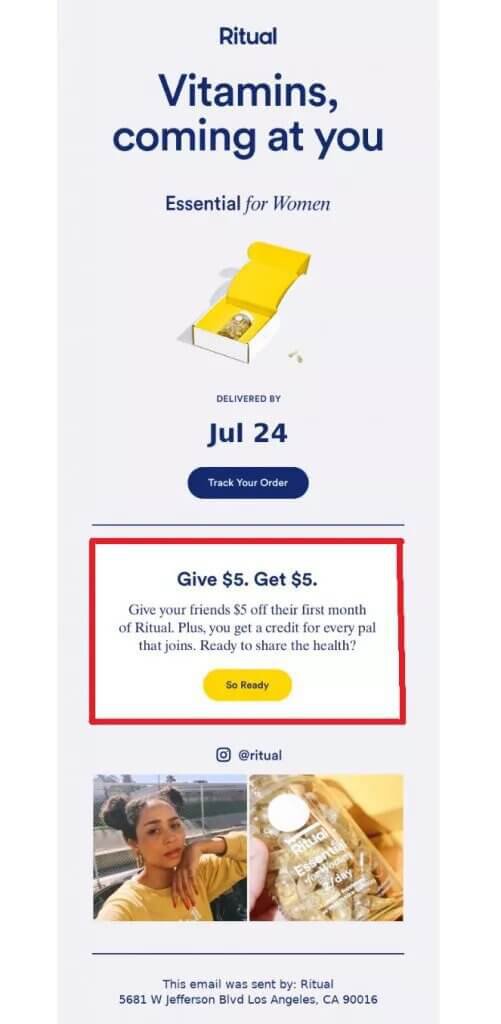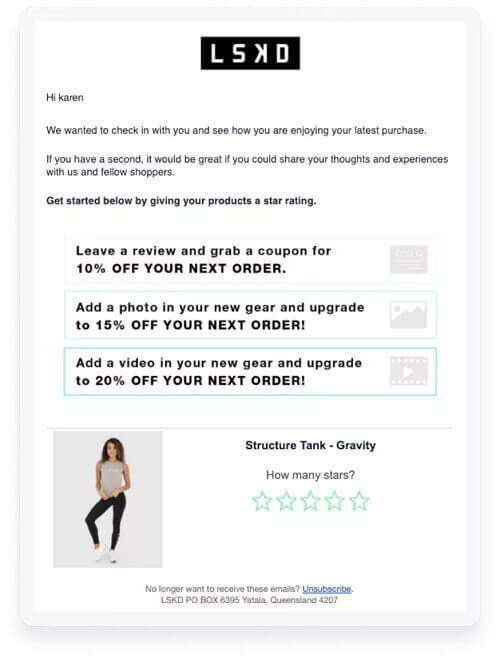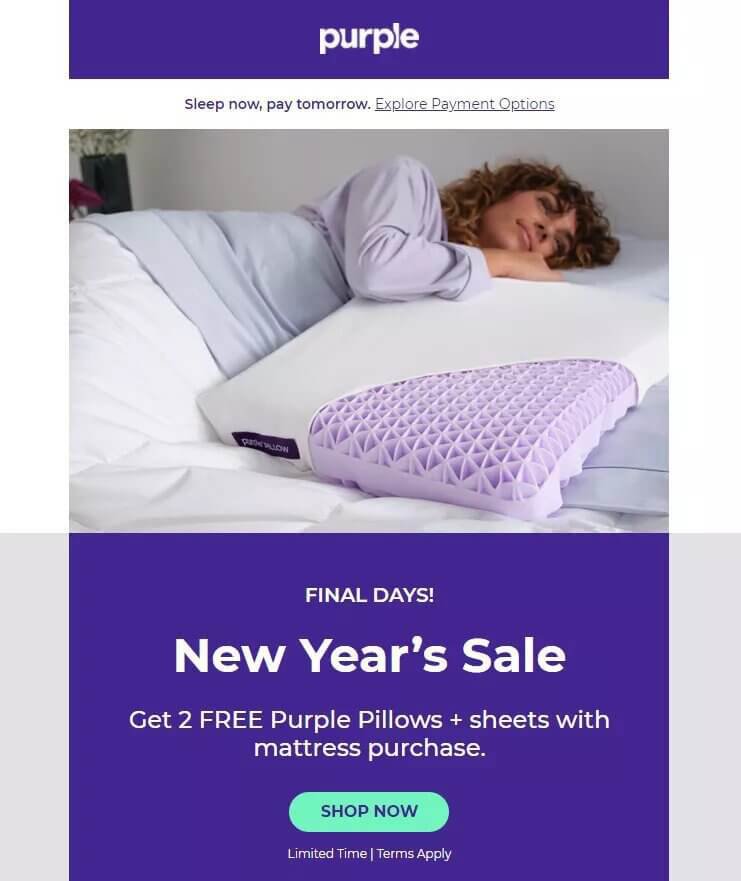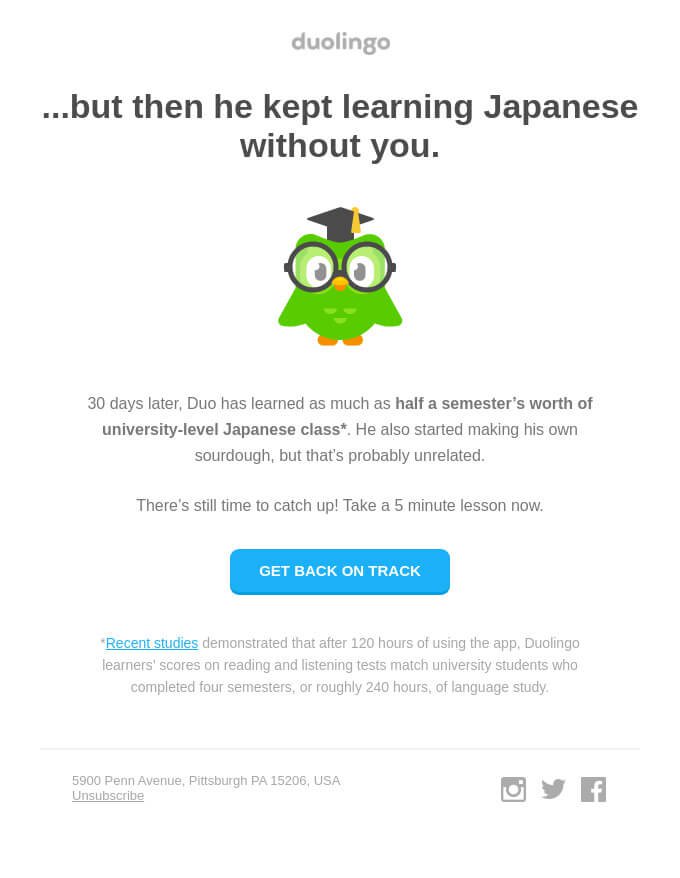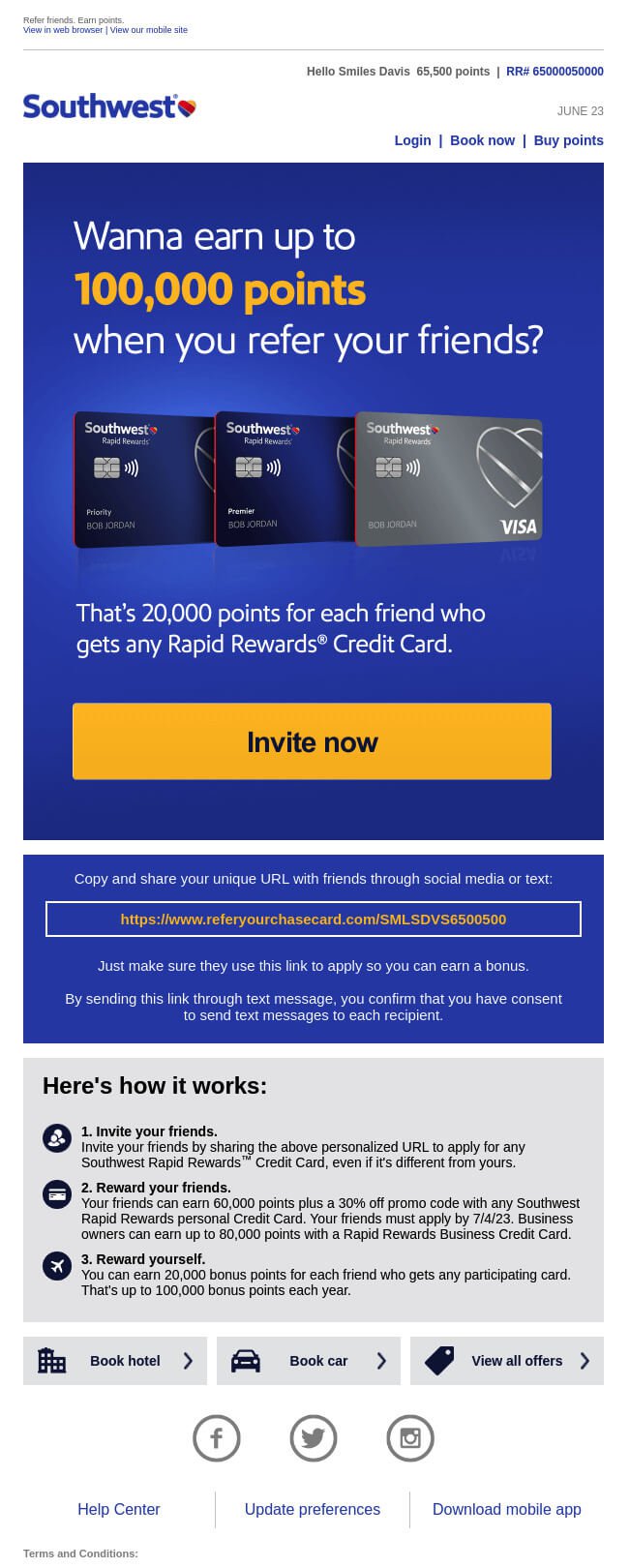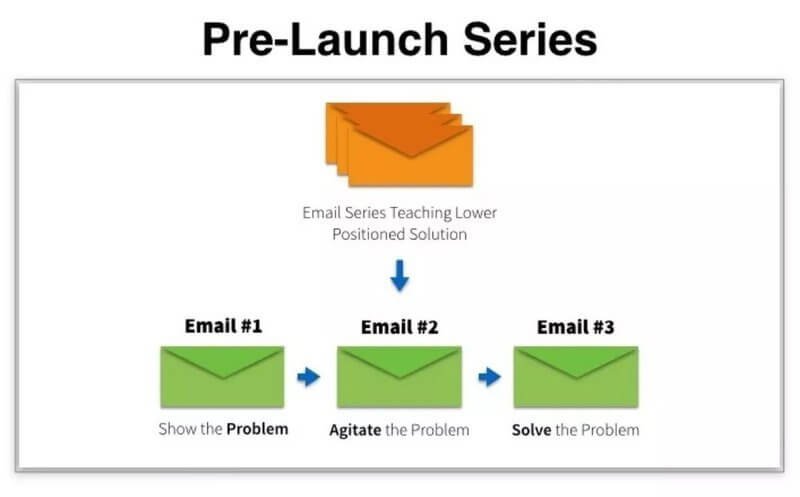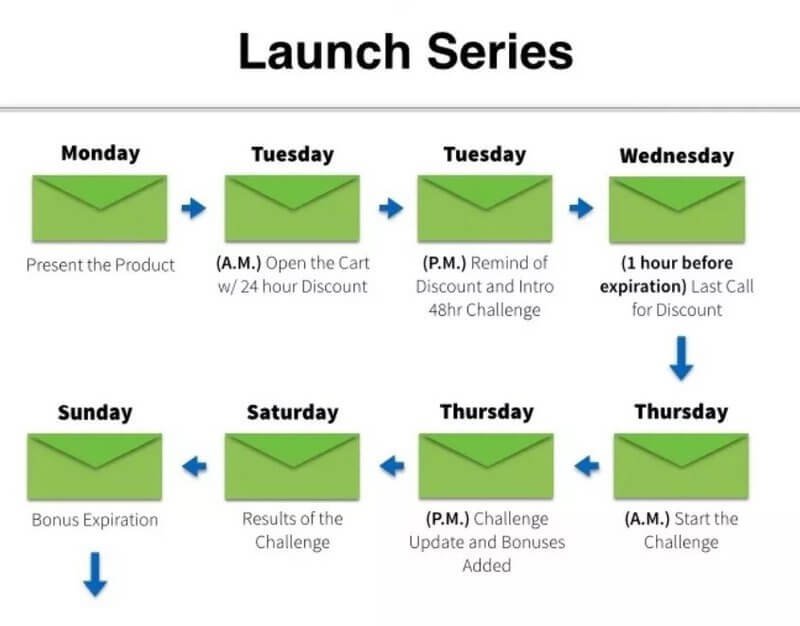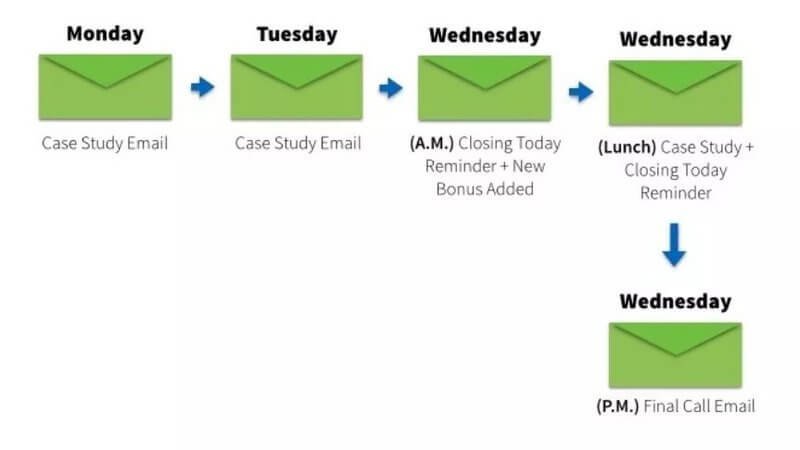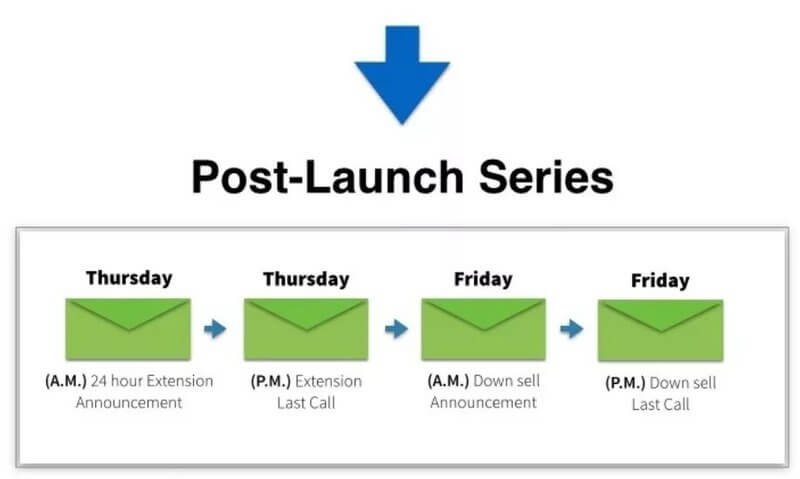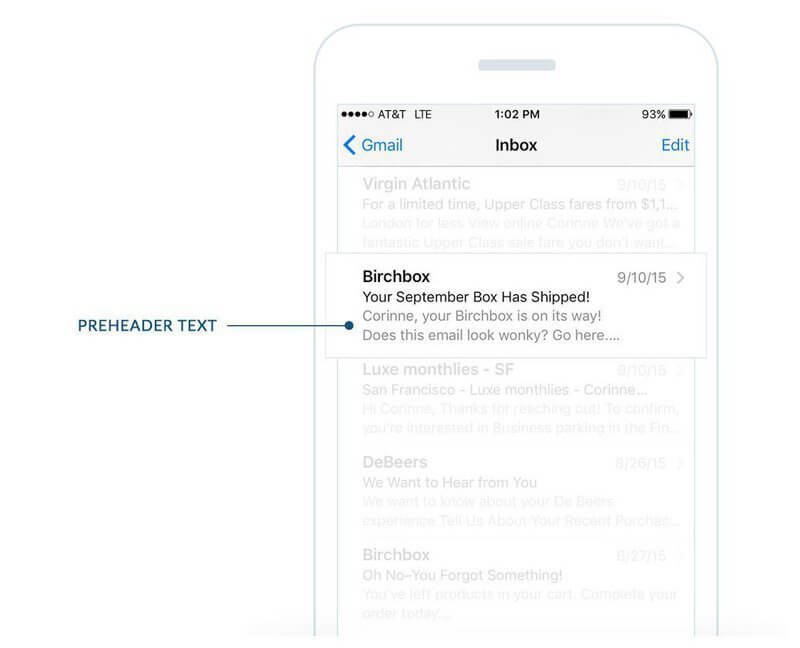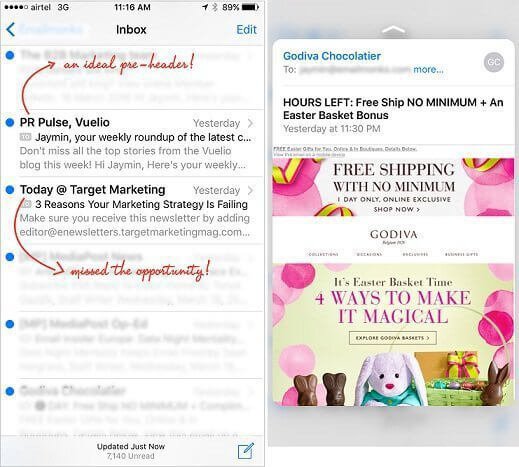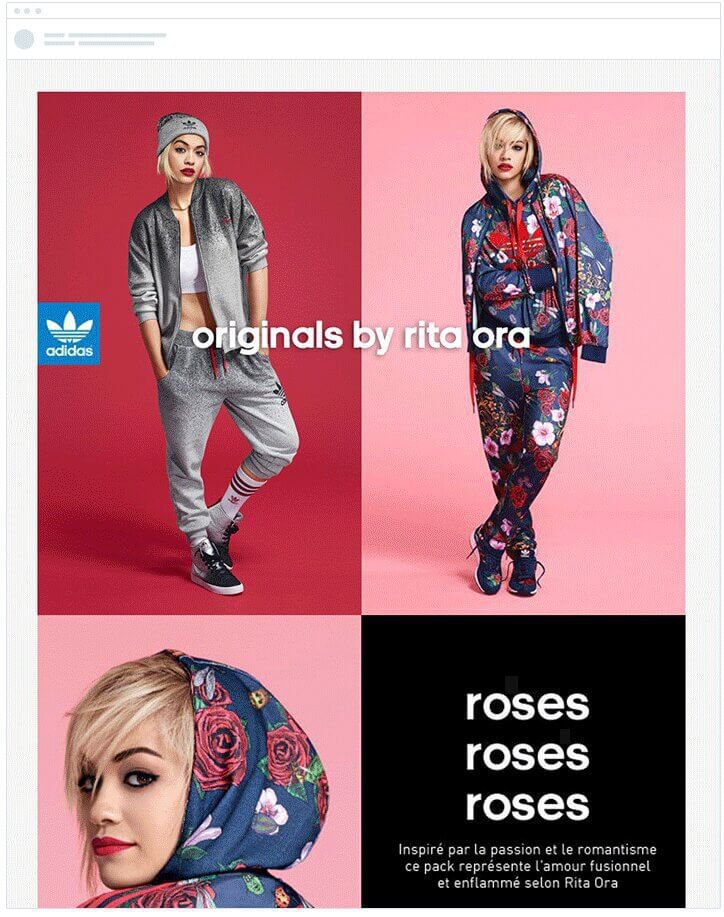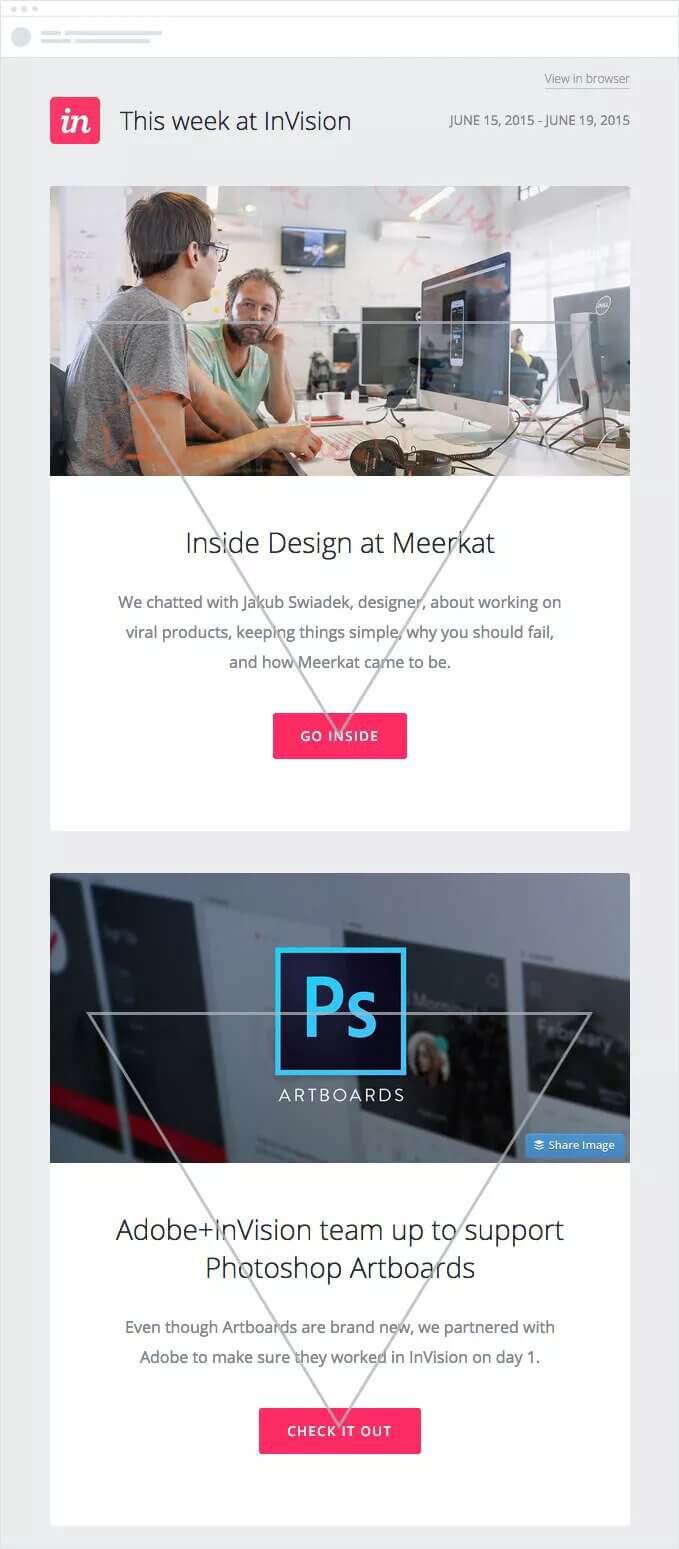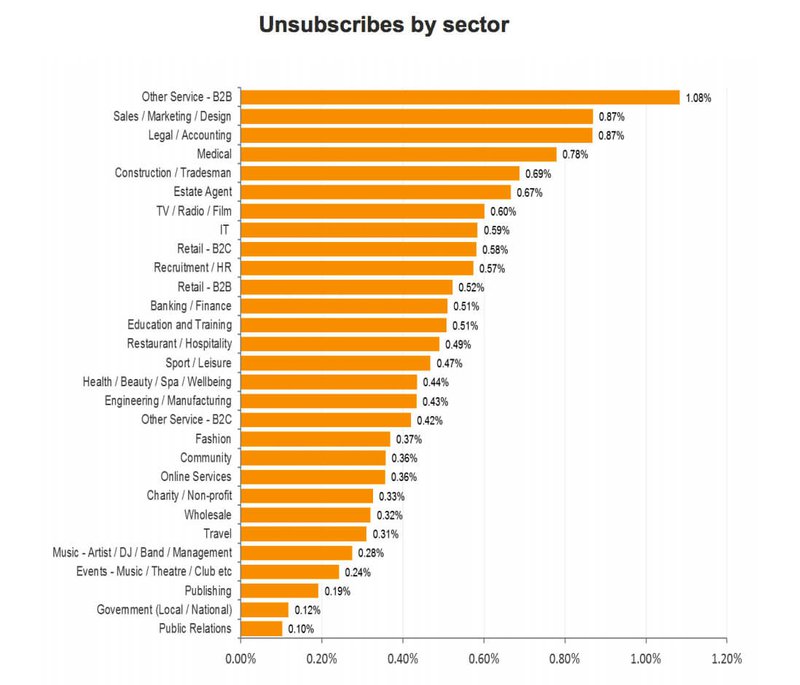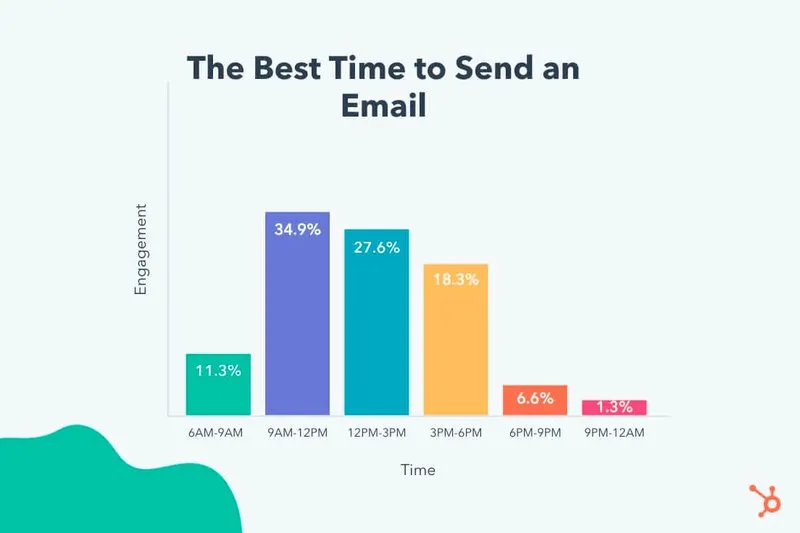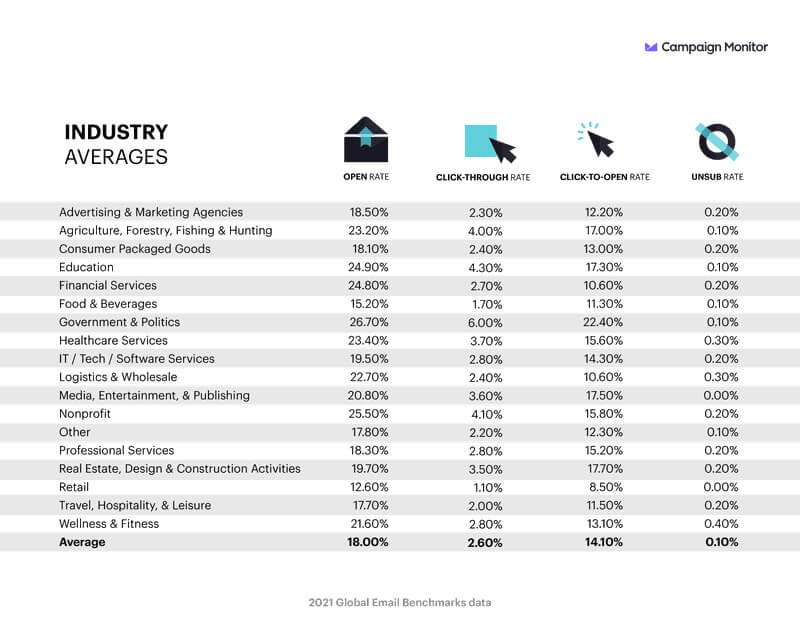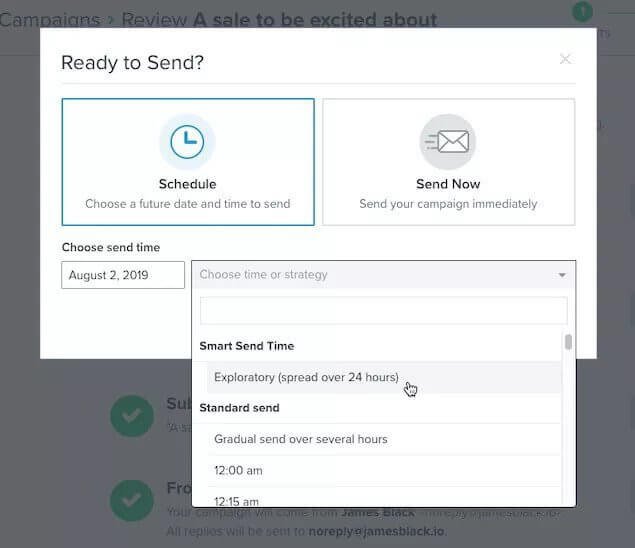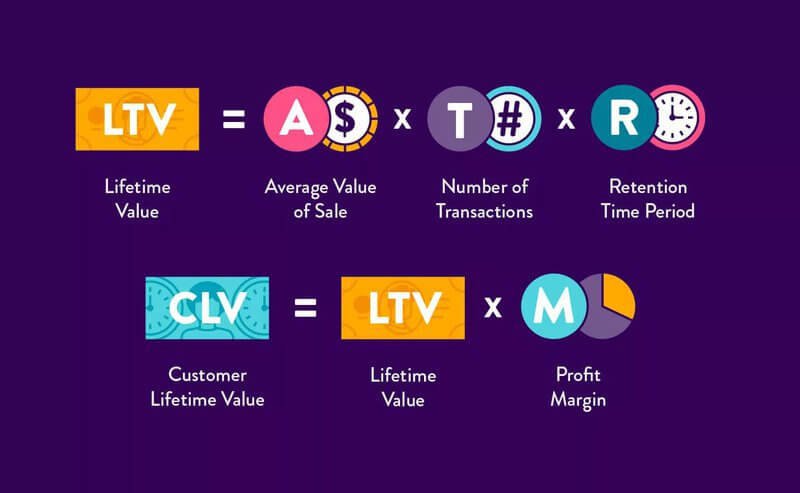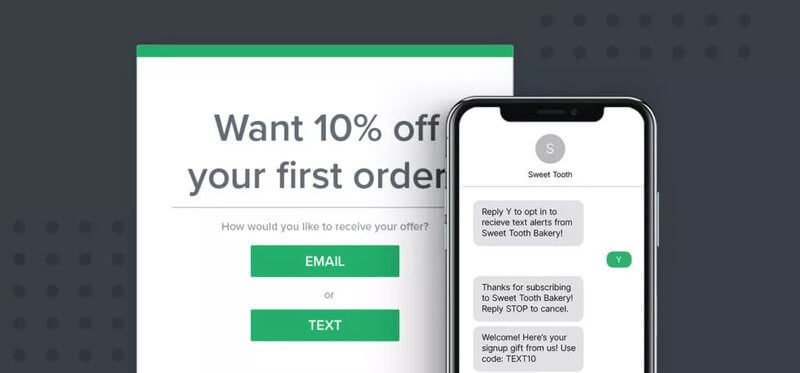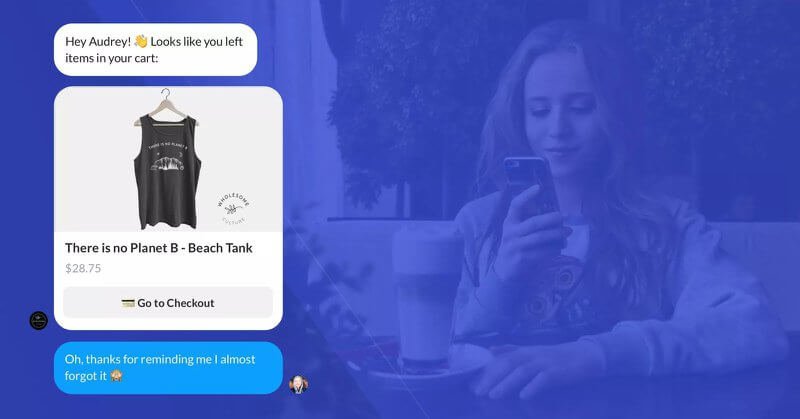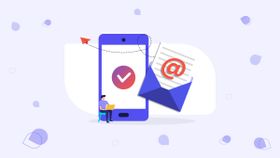Build Winning Ecommerce Email Marketing Campaigns (10+ Examples)
Your online store deserves the best email marketing. Scale your eCommerce brand with flows, campaigns, segmentation, content tips + Examples of top emails.
Updated November 5, 2024
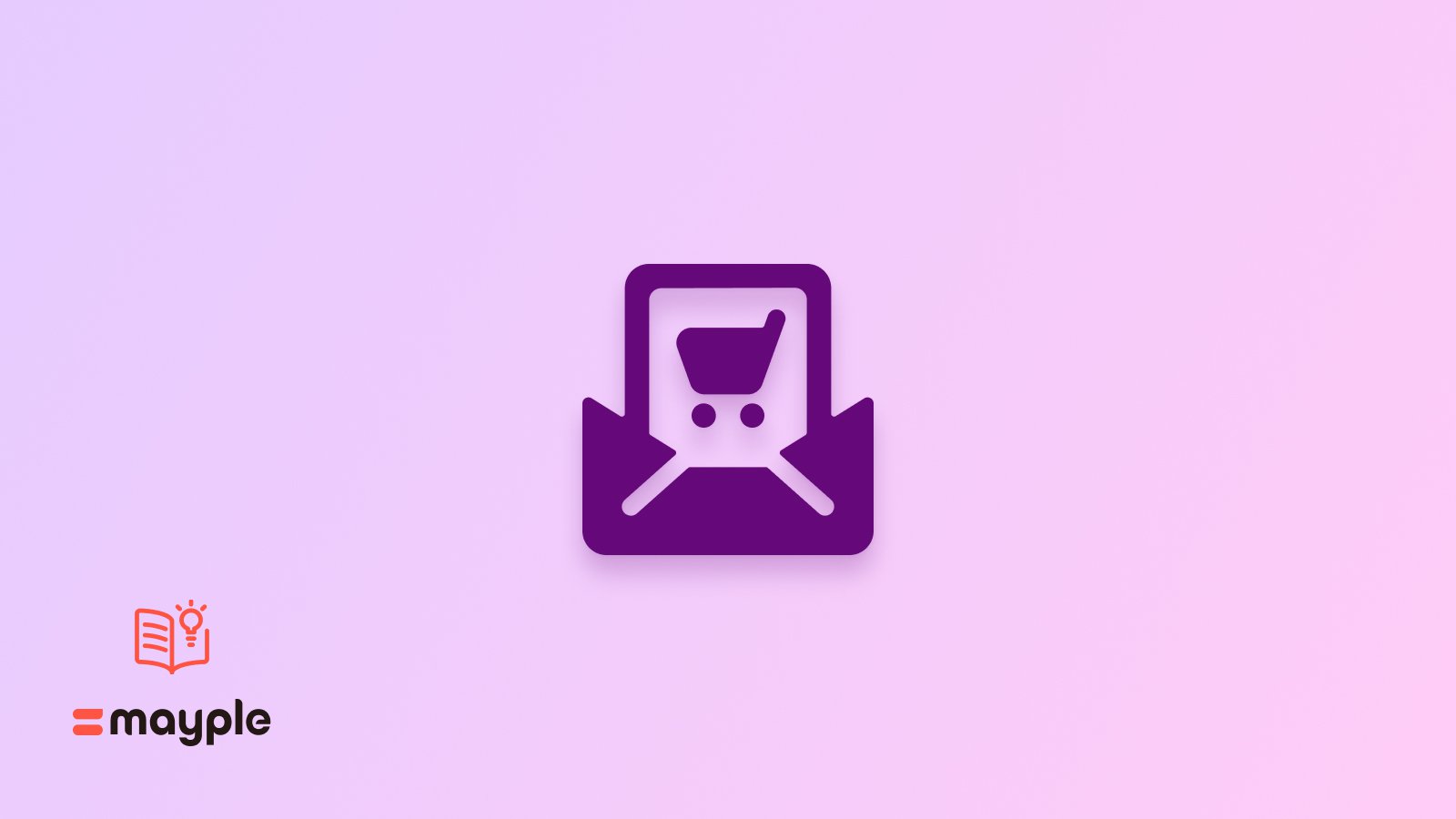
73% of marketers rate email marketing as the number one marketing channel for ROI, and this is even more effective in the eCommerce world. Brands of all sizes and industries rely on email marketing as one of their most lucrative channels.
In this chapter of our eCommerce guide, we go over everything you need to know about email marketing that drives actual Commerce sales. Literally - everything, with the right tools + strategies + and examples.
For a quick summary on the topic, here’s an incredible interview we did with one of the world’s top email marketers Chase Dimond, it’s full of insights + tips + and best practices.
Let’s dive in.
What is email marketing?
Email marketing involves sending commercial messages to groups of people, using email as the communication medium. Generally, every email you send to potential or existing customers can be considered "email marketing" - whether that's an ad or promotion, a business request, a sales proposal, or a donation request.
Simply put, email marketing is when an eCommerce brand sends a message to their customers through an email.
How did it all start? Let’s go back to the very beginning.
History of email marketing
The first email in the world was sent by computer engineer Ray Tomlinson in 1971. It was a test message to himself sent via a computer network in Cambridge, Massachusetts. Ray was is also known for introducing the “@” sign as the locator in email addresses.
The first commercial email was sent by Gary Thuerk, a Marketing Manager at Digital Equipment Corp, in 1978. He sent it to a list of email addresses, and that was enough for him to claim the title “King of Spam.”
Incidentally, that was a huge win for Gary - he sent the email to 400 customers and made around $13 million in sales.
>>> Want to learn how eCommerce got started? Check out our guide to the history of eCommerce.
Email marketing timeline
Here are a few more interesting historical points in the development of email marketing.
1988 - SPAM is added to the Oxford English Dictionary
I guess people were already upset with irrelevant email blasts, even before the internet.
Just for reference, here's the latest update on how the Oxford English Dictionary defines "Spam":
1989 - experts predict that other technologies would soon replace email
Have you heard the phrase - “email is dead”? This is when people talk about chatbots, social media, and text messages replacing email marketing. Well, experts already predicted the death of email back in 1989, they erroneously thought that fax machines will replace it. They really couldn’t envision a paperless world.
That same year, AOL recorded the famous “you’ve got mail” greeting.
1991 - the internet goes live
When the internet went live in 1991, email was used by universities and large corporations. It was still too expensive to use and the general public has not adopted it yet.
1996 - Hotmail launched the first free email service
On July 4, 1996, Hotmail launched the first-ever free email service. Within two and a half years the service gathered 30 million users and sold to Microsoft for $400 million.
2003 - the CAN-SPAM act was introduced in the US
The first act was passed to limit unsolicited emails. All email senders were now required to add an unsubscribe link and provide details on each subscriber.
2009 - Responsive Design was created
Just 2 years after the first iPhone came out we got responsive design. Businesses could now create emails that were mobile-friendly.
It feels like a blip in a history book but it took a lot of hard work and new tech to bring eCommerce brands the ability to target their customers via email.
But is email marketing all that it’s made out to be?
Email marketing terms every marketer should know
Before we proceed to explaining the ins and outs of eCommerce email marketing, we need to make sure all the terms we'll use in this guide are straightforward and easy to understand. So here are the most important email marketing and digital marketing words you need to know:
- Open rate - the percentage of customers that open your emails.
- Click-through rate (CTR) - the percentage of customers that clicked through on the email.
- Unsubscribe rate - this is the percentage of people that have unsubscribed from your email campaign. If you see this rate is high then there was a message mismatch with your audience or perhaps you’re using a low-quality email list.
- Revenue per recipient (RPR) - this is the average amount of revenue per recipient. Email flows or automation typically have higher RPR than a promotional campaign.
- Spam rate - this is the percentage of subscribers that mark your email as spam. A super important metric to keep track of to improve your email content.
- Bounce rate - this is the percentage of emails that bounce and never make it to the recipient's inbox. There are two types of bounces - a soft bounce and a hard bounce.
- A soft bounce - an email that couldn’t be delivered for a temporary reason. The email box could be full or the file could be too large. Not to worry, the system is going to try to deliver this email again soon, there’s nothing you should do here.
- A hard bounce - an email that couldn’t be delivered for a permanent reason. It could be a fake email or that the server blocked your email address. You should regularly remove all email addresses that hard bounce, in order to keep your delivery rate high and your email list healthy.
- Email deliverability - is your ability to deliver an email to the subscriber’s inbox. It’s super important to keep this high because the lower you go, the worse your reputation becomes with the Email Service Providers (ESPs), and the more it will negatively impact your ROI.
- Personalization & dynamic content- personalization is the act of personalizing your emails to better fit your customer. For example, inserting the first/last name of the customer, their company name, or their location is called personalization. The particular content used is called dynamic content that is displayed and triggered based on the subscriber’s data.
- Email segmentation - this is the act of dividing your list into customer segments. You can do this by geography, gender, interests, purchase habits (past purchases), or the subscriber’s activity on your site.
Now that you have a better grasp of the different terms, let’s explore which email campaigns you need to send to grow your eCommerce brand.
Does email marketing work?
Studies show that for every $1 spent, brands make an average of $36 That’s a very high return on investment (ROI), higher than any other marketing channel. We covered it extensively in our guide to email flows.
The real reason the ROI of email marketing is so high is that consumers still expect to be sold via email. Virtually all customer communication leads to an email.
Think about it.
Text messages, Messenger interactions, lead magnets, popups, affiliate traffic, and influencer campaigns all lead to a user subscribing to your email list. When users sign up for an offer they expect to get an email and continue checking out through it. That’s why an email's average order value (AOV) is 3X higher than on social media.
As the saying goes - all roads lead back to email marketing. So, the first thing you need to do to start selling your products via email is - to build an email list. There is a very long list of benefits to doing it:
Builds long-term relationships and brand recall
Building an email list is fundamental to creating a direct line of communication with your potential customers. It enables the nurturing of long-term relationships, increased brand recall, and provides a platform for tailored promotional activities.
Leads to more sales
Email marketing, with its high return on investment and potential for personalized messaging, is a key driver of sales for businesses. Building an email list allows for targeted promotions, helps foster long-term relationships, and ultimately boosts revenue by increasing the average order value.
Boosts average order value
The efficient use of email marketing enhances customer engagement and amplifies the average order value significantly. It creates a personalized shopping experience, helps build efficient loyalty programs, and consequently results in higher conversion rates and increased revenue.
Increases purchase frequency
Through tailored content and personalized promotions, email marketing can stimulate repeat purchases, increasing customer transaction frequency. This strategy bolsters revenue growth and cultivates customer loyalty, reinforcing the brand-customer relationship.
No third-party gatekeepers and algorithms
Building an email list ensures direct communication with your customers, free from the influence of any third-party gatekeepers or algorithms. This level of unfettered access allows for more authentic and personalized interactions, thereby strengthening your relationship with your customers and boosting your brand's visibility.
It’s efficient and direct
Email marketing stands as an effective and direct communication tool, enabling businesses to nurture relationships, drive sales, and increase their average order value. This indispensable marketing channel also offers the unique advantage of being free from third-party gatekeepers or algorithms, allowing for transparent and individualized customer interactions.
Allows you to personalize your messages
Personalization in email marketing is the key to unlocking more engaging interactions with your customers. By tailoring your messages to individual needs and preferences, you can boost your click-to-open rate, click-through rate, and, ultimately, conversions.
It’s more likely your email audience wants to hear from you
With email marketing, businesses can directly reach out to customers who have expressed interest in their products or services. This, in turn, leads to better engagement, fostering a stronger connection between the brand and its audience, and often resulting in increased sales.
How to build an email list
First, you need to create a way to convert your site traffic by creating a way to capture leads on your site. That means - popups, banners, lead magnets, countdown timers, special offers, you name it. Pick those things that will resonate the most with your audience and publish them on your site.
Then, use the various marketing channels you have to drive traffic to your site. You can use social media to bring people to the site directly, create a giveaway where customers have to sign up to enter, or run an ad.
If you are a brick-and-mortar store you can even use a traditional sign-up sheet. Get people on your list as soon as possible and then focus on creating the best email marketing content that will delight your audience and convert them into paying customers.
Pro tip: Looking for the right tool? Check out our comprehensive guide to the best email tools for eCommerce.
Let’s review. Here are the ways you could create and grow your email list:
- Add sign up forms or popups to your site
- Leverage your social media audience
- Run a giveaway
- Use an influencer to drive traffic to your site
- Run an ad
- Use a sign-up sheet if you have a physical location
The 12 Top Email Campaigns You Need
What types of email campaigns should you send?
Here are all the types of email campaigns you should set up for your online retailer business. And a lot of these should be automated into email journeys or sequences.
Lifecycle email campaigns
Customer lifecycle emails are campaigns you send to your customers, depending on where they are in their journey. These campaigns are designed to help you engage and retain customers at every buying cycle stage, improve conversion rates, and boost your overall customer retention.
Here are some of the main types of lifecycle email campaigns
Abandoned cart emails
Cart abandonment emails are the most lucrative email flow because they allow you to target customers who have just added something to the cart, but didn't complete the checkout process. They have the highest buying intent in your entire mailing list.
Studies show that cart abandonment campaigns get up to 50% open rates and almost 9% in CTR.
Here’s a great example of an abandoned cart email from Allbirds:
Some cart abandonment best practices include:
- Display the product the user added to their cart (most email tools have this feature)
- Have a clear CTA (always important)
- Show other similar products below the main product image
- Send 3-4 follow-up emails and space them out (30 minutes, 1 hour, 3 days, 7 days)
- Add customer reviews and social proof
Here’s an example of an flow set up for cart abandoners in Klaviyo:
Browser abandonment
You guessed it, this email campaign is an advanced strategy that helps you target customers who haven’t added anything to the cart yet, but browsed your site and then left. Keep in mind that you can employ this type of digital marketing tactic if you have their email addresses, which is only possible if they have previously left their email on your site.
Here’s an example from Parachute:
Browse abandonment messages are very similar to cart abandonment email campaigns in the sense they're both behavioral email campaigns (e.g., emails triggered based on customer behavior.)
However, when setting up a browser abandonment flow, you need to make sure you employ tactics that speak to the intent behind the user's behavior - they browsed, showed interest, but didn't buy. This means they could, in fact, be looking for:
- Cheaper alternatives
- Better value for money
- Different product features/styles
So, it's important to make sure your email campaigns address the shopper's needs and wants. So, here are some browser abandonment tactics you should try:
- Remind your customers what they liked. Show them the same products they browsed on your site
- Segment based on how many times the user viewed a product
- Create a sense of urgency (like a countdown timer or offer)
- Include UGC and customer reviews
- Use a variation of your best-performing cart abandonment emails
- Focus the message on the text
- Show images
- Throw in an incentive
- Use an engaging call to action
Pro tip: Need a boost of creativity? Want to nail your click-to-open rate? Check out our list of the top browse abandonment subject lines.
Post-purchase and transactional email campaigns
Email isn’t just used to convert a visitor to a customer, it’s also critical in delighting the customer after their shopping session and turning them into an ambassador for your brand.
Here are the transactional emails / post-purchase emails you need to send after the customer purchases your product:
- Order confirmation
- Shipping confirmation
- Delivery confirmation
- Order follow-up (feedback request)
- Thank you email
Remember: you shouldn't look at transactional emails as just an information-driven communication. Take the opportunity to shape these emails into relationship-building messages and differentiate your brand from the competition.
Order confirmation email
The most crucial email post-purchase is the order confirmation email. This is your chance to provide a confirmation for the customer, display all the relevant information for them, set delivery expectations, and showcase your brand.
Here’s an example from Asos:
Order confirmations are among the most common types of eCommerce emails. To make them better (and more effective at driving revenue for your store), try to incorporate the following tactics:
- Product upsell: include a product recommendation (it can be for a higher-tier product than the one they purchased or a complementary one)
- Discount codes and free shipping: share discount codes or free shipping vouchers to incentivize them to come back to your store;
- Invite customers into your community: encourage your audience to follow you on other channels as well, or invite them into a close-knit online community to foster a sense of belonging, forge your relationship with them, and gather insight from their behavior there.
- Include the order details: make sure to include the order number, shipping and billing address, items purchased, and any other relevant information.
- Set delivery expectations: provide an estimated delivery date or tracking information for the customer to keep them updated on their order.
- Showcase your brand: add in a personal touch or showcase your brand’s personality through the email design or messaging. This will help strengthen the customer relations and entice them to come back to your store.
- Add all return and guarantee information: It’s important to include information about returns and guarantees in case the customer needs to refer back to it later.
- Add a nice picture of the product(s) your customers have purchased: Doing this will help you keep them excited about their deliveries
Pro tip: Include a call-to-action button for customers to easily track their order or view their purchase details, like in this example from Nike:
Shipping notification
The next customer touchpoint is the shipping notification email. This is where you notify the customer that the product has been shipped. It’s a great time to present your shipping insurance if you have one, your return policy, and any other guarantees that will increase the customer’s trust in your brand.
Your customers are eager to know when their order is shipped and when it will arrive at their doorstep. This eCommerce email classic should provide all the necessary information about shipping, tracking numbers, estimated delivery dates, etc.
Sometimes, even a simple, yet sincere post-purchase “Thank you email” with a quick shipping information note can make a world of difference in how customers perceive you - so make sure to implement this type of campaign.
Here’s an example from Ritual, the vitamin brand.
Shipping notification best practices include:
- Display the delivery date front and center
- Use a visual delivery app like Route to display the product in transit
- Invite your customer to interact with your social media pages
- This is a great place for a referral program widget (for products with smaller AOV)
Pro tip: Include a catchy message or call-to-action (CTA) in your shipping confirmation emails that encourages customers to share their purchase on social media or leave a review.
Delivery confirmation
Once the product arrives you should send a delivery confirmation email. This is a great time to showcase a video with instructions on how to use the product, a short 30-60 second clip on how to unbox properly (if you’re a mattress brand), and show user-generated content to give your customer some ideas of how other people use your product.
Here’s an example from Abercombie & Fitch.
This email is a bit long, but bear with me, it has all the elements of a flawless delivery confirmation email.
The main elements of a perfect delivery confirmation email include:
- Display the order & shipping details
- Show a picture of the exact product(s) delivered
- Provide all the necessary info to return or exchange the item
- Provide all the ways your brand can be reached for questions
- Display similar products
- Ask for a review or a rating of the customer’s experience
Thank you emails
Thank you emails aren't mandatory, for sure -- but they can make a world of difference in how your audience perceives you and the kind of relationship you build with them.
To make sure your "Thank you" email does its job, remember to:
- Keep it short and simple: there's no need to expand it unnecessarily;
- Use engaging CTAs: motivate people to come back to your store;
- Make it social-worthy: the more shareable your Thank You message/ page is, the more people will want to spread the word about your brand
Review/feedback requests
After the product is delivered it’s a great idea to ask the customer for feedback and a review. The timing of this email is obviously going to depend on the particular product and industry of the brand.
If it’s a hair product in the $30-$50 range there’s a good chance that the customer will use it within the first week of receiving it. If it’s a suitcase, the customer might have plans to travel somewhere and you might want to wait 1-2 months before asking for a review.
Here’s an example from LSKD:
Here are some tips to help you make the most out of your feedback collection efforts:
- Focus on your shoppers: Customer satisfaction should be your North Star, not sales, so be genuine and open;
- Make it easi for customers to respond: Add the survey on your website to maximize your chances of collecting as many responses as possible;
- Negative feedback can propel growth too: Follow up with dissatisfied customers to see what went wrong and how you could make it up to them or improve your product/ service for the future;
- Make the most out of the feedback you receive. Add the reviews to the product pages because theyFollow up can act as social proof and convince undecided customers to buy from you.
Pro Tip: the best reviews are images and videos of your customers using your product. For example, in the email example above, the brand incentivized their customers to create the highest quality user-generated content (UGC) and it’s a great way to get those images and videos.
Upsell / cross-sell
Upsells and cross-sells are a great way to make product suggestions based on the type of products your shoppers bought from you. Because they've already made a purchase, including product recommendations on complementary products can increase the odds they'll add a new item to their cart and buy more from you.
Timing is key to making sure your product recommendations fall on ome brands sell an upsell or a cross-sell email on the first email in the welcome flow (after the customer purchases the product). Other brands send the cross-sell offer with a complimentary product 30-45 days after purchase.
Here’s an example from the Dollar Shave Club.
I love this email because it is so simple.
There is a clear “ADD” button on each product that takes the customer directly back to the cart. It’s super simple, it explains the value of these products and is designed beautifully.
Promotional emails
Promotional emails frequently make the bulk of the emails included in an eCommerce business' strategy. There's more to running promotions than Black Friday campaigns, though. For example, here are some types of commercial emails you could consider:
- New products
- Time-sensitive
- Seasonal promotions (April's Fools, winter holidays, Mother's Day, etc.)
- Subscriber discounts
- Product newsletters
- Content marketing promotion
- Upsell and cross-sell emails
- Restock emails
- Date-based emails (such as anniversary emails, for example)
The most common use of email marketing is to send a promotional campaign around a holiday or a special event. These are really built for those subscribers who are motivated by discounts and should be used sparingly.
If you send too many promotional emails without talking about your brand and product value you will eventually exhaust your list and decrease your customer lifetime value.
Here’s an example of a New Year’s campaign from the mattress company Purple:
To create promotional campaigns that drive sales, remember to:
- Display a prominent, eye-catching image at the top: This helps draw the audience in and it makes them more likely to buy.
- Make sure the offer and CTA are clearly visible: People don't have too much time to scramble through an email to look for your offer. Rather, make sure they can see it clearly and click in just a few seconds so you don't lose their interest.
- Include content about your brand: Remind people why they are subscribed to your email list. Tell them what's going on in your company and if you've achieved any milestones or launched new products. It helps build trust and reinforce brand loyalty.
- Add UGC (user-generated content) images: Social proof is a powerful tool in marketing, especially for online retailers (63% of consumers will more likely buy from a store if they see images and videos from other customers.) Including images or videos of happy customers using your product can be the final push needed to convince someone to buy.
- Use scarcity and urgency tactics: Creating a sense of urgency and scarcity helps create FOMO (fear of missing out) which can drive people to purchase before the offer expires. For example, including a countdown timer or limited stock availability can encourage people to act quickly. However, be careful not to overuse these tactics as it can create distrust and damage your brand's reputation.
Welcome emails
Welcome emails have two main goals: the primary one is to, well, welcome customers and users -- similar to what you would do if they stepped into your brick-and-mortar store for the first time. The second objective is to motivate new subscribers and customers to make a purchase, start using the product, or even upgrade to a better plan/ option.
Here’s a great welcome email example from Threadheads:
Here's how to make your welcome emails stand out:
- Offer value: Give subscribers an incentive to make their first purchase or take action. You could offer a discount, free shipping, or even exclusive content if your audience is interested. You could also offer training on maximizing the power of your product or service.
- Tell your story: Use this opportunity to provide background on your brand and explain what makes you special. Make sure to highlight any unique selling points (USPs) and give customers a reason to return.
- Include a CTA: Tell your audience what action you want them to take, whether it's subscribing for updates, following you on social media, or emailing you with any questions. Show you're not just an email in an inbox, but an entire comms system ready to pick up on the conversation with your customers.
- Time it right: All emails should be timed right, but it is paramount to ensure that your welcome email is sent as soon as possible. This will help to make a good first impression and keep the customer's interest high.
- Make it personal: Personalization can go a long way toward increasing engagement and conversions. Address customers by their name, segment your list so you can tailor content to specific audiences, and use data from previous interactions with your brand.
- Set the right expectations: It's important to set the right expectations in your welcome email. Let customers know what they can expect from future communications, such as frequency of emails, types of content, and any special offers they may receive. This will help to manage their expectations and prevent them from becoming overwhelmed or disengaged with your brand.
Winback email campaigns
Winback email campaigns are meant for customers who have become inactive or stopped purchasing from your brand altogether. These re-engagement campaigns can help re-engage these customers, bring them back into the sales funnel, avoid churn, and increase customer retention and customer lifetime value.
Here’s an unignorable winback email from Duolingo (the subject line says “You made Duo sad”, by the way.)
Some ideas for winback emails include offering a special discount, highlighting new products or features that may interest them, or asking for their feedback on why they stopped engaging with your brand. It's important to make these emails stand out -- use creative subject lines, eye-catching visuals, and personalized content to grab the customer's attention and entice them to come back.
Generally, some of the most important best practices to keep in mind with winback emails include:
- Timing is key: Send winback emails after a certain period of inactivity, but not too soon or too frequently. You want to give the customer time to potentially make another purchase, but also don't want them to forget about your brand completely.
- Personalization: Use data from previous interactions and purchases to personalize the content of your winback emails. This can help re-engage customers and remind them of why they were interested in your brand in the first place.
- Make it valuable: Offer something of value to the customer, whether it's a discount, special offer, or exclusive content. This can motivate them to come back and make another purchase.
- Keep it simple: Don't overwhelm customers with too much information or too many calls to action -- keep the email simple and focused on encouraging them to take action.
- Test and analyze: As with any marketing campaign, it's important to test different elements of your winback emails, such as subject lines, visuals, and offers. Use data analysis to see what works best for your audience and make adjustments accordingly.
Referral emails
Referral emails and rewards programs can be a powerful tool for increasing brand awareness and acquiring new customers. By encouraging your existing customers to refer their friends and family, you can tap into their networks and potentially reach a whole new audience.
Here’s a referral email example from Southwest:
Some tips for creating effective referral emails include:
- Make it easy: Don't make the process of referring too complicated or time-consuming. Make it as simple as possible for customers to share your brand with their network.
- Offer incentives: Incentivize both the referrer and the new customer with a special offer or discount. This can motivate them to take action and also show appreciation for their support.
- Provide social proof: Include testimonials or reviews from happy customers to show potential new customers why they should trust and try your brand.
- Segment your list: Segment your list and tailor your referral emails to different target audiences. For example, you may have a separate email for loyal customers who are more likely to refer their friends compared to new customers.
- Follow up: Don't forget to follow up with both the referrer and the new customer after the referral
Email drip campaigns: perfect your product launch emails
We’ve saved perhaps the most powerful tip for the end of our guide. This one is extraordinary and works especially well for B2B companies, but the same idea could be used for any B2C product.
Many businesses focus the bulk of their time on product development and on-site optimization, and they forget to introduce their products to their audience properly. If you do a proper product launch email campaign, you could significantly increase your sales and see some amazing short-term results.
There are many ways to structure a product launch drip. Here’s a great one that Bryan Harris used to make $200K with his product launch (it's not something you can find in a book about email marketing).
Bryan breaks his series into three parts - the pre-launch, the launch, and the post-launch.
In the pre-launch series, he introduces the problem that his product is going to solve for the consumer. Then, he agitates the problem, and this is crucial. He writes a detailed email really painting the picture of the consumer’s need for the product, and hitting on all the pain points. Then, in the third email, he introduces the solution.
The middle part of the launch series is more geared towards B2B businesses and that’s where Bryan offers a 48-hour challenge. If you are a B2C company you could offer a giveaway with a 24-hour deadline, or launch a UGC challenge for example.
Also, spacing out your emails is always good, you don’t have to follow these same sending times.
The post-launch series is a really simple set of four last emails where you offer your product at a discount one last time. Overall, this is a super-effective product launch drip and you could use some of these principles and email examples and adapt them to your own business.
Regardless of the templates that you use, you could always combine them with your ConvertCart set up to personalize the emails based on the customer’s browsing and shopping data. You could also A/B test each product launch drip to get better conversions. And finally, you could involve your influencers and UGC elements in the emails.
Not sure which tool is best for effective drip campaigns? Is it Klaviyo or Drip? Here’s a quick Klaviyo vs Drip overview to help you decide.
Essential best practices for eCommerce emails
Clearly, there's no one-size-fits-all recipe to nailing your eCommerce email marketing. Still, there are some key best practices that every eCommerce business should keep in mind:
Email copy & design best practices [with examples]
All emails are not created equal.
Every brand has its own color theme, tone of voice, and selection of images, but there are some general best practices.
Here they are.
Copy best practices for eCommerce emails
1) Use power words: For instance, here's a list of 401 power words you can use in your emails.
2) Avoid spam words: Here's another list of 500+ spam trigger words to not use in your emails.
3) Use short paragraphs: Keep them between three and five sentences to better maintain your audience's attention.
4) Make the subject line personal, engaging, and relevant (and use humor if it fits your brand)
5) Don’t use all CAPS in the subject line: It's bothersome for the eye and it can also trigger spam filters.
6) Add an emoji to make your subject lines stand out -- because who doesn't like a bit of color in their inbox?
7) Subject lines should be 65 characters long: Anything longer than that will be cut off by email clients.
8) Optimize the preheader or preview text to be more engaging: Preview texts can help you tell your story and attract more people to click the email/
Here’s a comparison of the right and wrong use of a pre-header:
Design best practices for eCommerce emails
1) Use dynamic content: Like this email from Adidas that displayed different content based on the gender of the recipient.
2) Use the inverted pyramid layout, where all of your content visually leads the user to the CTA
3) Email width should be 640 pixels maximum, don’t go beyond that
4) Make images 600-640 px wide
5) Always use alt text, as it helps people with disabilities understand the images used.
6) Use a single-column layout with at most two columns for easier readability on mobile devices.
7) Make sure your CTA is clear and visible, don't let it get lost in the design.
8) Use white space strategically to make your email more visually appealing.
9) Keep branding consistent throughout all your email communications.
10) Use images to describe the content better, not just to fill the space.
11) Optimize all of your emails for mobile - keep the subject line short, use preheader text, minimal copy in the body, use only one clear CTA button, increase the font size to 16 px if it's too small, and make sure your custom font and the images look right.
Let’s say that you’re sending emails but they’re not getting the sales you’re looking for. What do you do? Do you frantically redesign everything and re-write all the copies? Nope.
You might have a lot of good elements in your email already, that you would want to keep.
The first thing you should do is to rule out these fatal errors:
- Emailing your list too often - are you sending too many emails?
- Bad email list - how good is your list? Maybe you should check your list health, deliverability issues, spam rating, etc.
- Overly promotional content - are you constantly sending out promotions? How much do you educate your customer on your brand and product value? Educational content can help you build trust, rapport, and loyalty -- so make sure you include it in your email marketing plan.
Once you checked all the boxes above, let’s look at each of your emails.
How to measure and improve your eCommerce emails
Email marketing experts recommend focusing on one variable at a time and testing every change along the way. So here are some of the best ways to improve your emails.
How do you improve your open rate?
The main driver of the click-to-open rate is the subject line. So look at your subject lines and see how you can improve them. Test out adding emojis, using humor, making them shorter and clearer.
How do you improve your click-through rate (CTR)?
First, look at your content. Make sure that it aligns with your audience. Test out emails that are not promotional, set up your transactional email flows (post-purchase, shipping notification, etc)
How do you improve your unsubscribe rate?
First, look at how often you email your customers. The best practice here is going to vary by industry. If you sell shaving cream, you can expect your customers to re-order every few months. If you’re a furniture eCommerce brand, you should not send your customers monthly promotions. Chances are that they buy furniture once or twice per year.
You could also work on segmenting your list correctly, which means sending the right content to the right group of customers. An email marketing agency can help you with this if you don’t have the time.
Further tips on how to nail your eCommerce email marketing & drive more sales
Aside from everything mentioned above, there are a few more tips that can help you improve your eCommerce email marketing strategy and drive more sales. Here are some of the essential ones:
Email segmentation: the key to sending ultra-personalized emails
Email segmentation sounds really complex, but it’s actually very simple. Many email marketing tools today have built-in email segmentation features that let you set up everything in a few minutes.
What is email segmentation?
Email segmentation is the division of your email subscribers into smaller segments based on a set of criteria. Typically, email segmentation is used as a personalization tactic to deliver more relevant content to subscribers based on their geographic location, interests, purchase history, gender, and much more.
Types of email segmentation
Here are the different criteria you could use to segment your email list and send more targeted and personalized emails.
- Demographic email segmentation: This is the most obvious way to segment your list. We’re talking about demographic factors like gender, age, income, etc.
- Geographic email segmentation: Segment your list based on where they live (if that has an effect on your industry). For example, if you are in the fashion industry, climate and weather patterns have a huge effect on what people wear.
- Behavioral email segmentation: Segment your list based on the user’s behavior on your site. That means sending different emails based on which products the user looked at, how many times, how often they have opened or clicked through on your emails in the past, and more. Think: browser abandonment and cart abandonment emails.
Besides segmenting your emails correctly, you also need to send your emails to them at the right time.
eCommerce email marketing benchmarks you should keep in mind
First, you should select an optimal time to send your emails. This helps you maximize click-to-open rate (and avoid having your email drown in an overcrowded inbox.)
Here’s some research from CoSchedule where they highlight the best time to send emails:
Also, remember you should measure the success of your email campaigns according to industry benchmarks too. For instance, here is a study from Campaig Monitor that has the open rates, CTR rates, and unsubscribe rates broken down by industry.
If you’re using Klaviyo email marketing, you can access other more advanced features that help you better select your send time.
- Spread your send over 24 hours
- Gradual send over several hours
- Time your send based on the timezone of the recipient
- Use the optimal time based on your email data
Now let’s talk about email deliverability.
Work to improve your email deliverability
This is another super important email marketing aspect critical for every eCommerce brand. Email deliverability is about getting your emails delivered. And there are several things you can do to improve deliverability.
Best practices to improve email deliverability are:
- Use a double opt-in
- Have an unsubscribe link on every email
- Send your emails from a business domain
- Make all your emails responsive
- Keep images at 600 px in width or less
Pro tip: work with an email deliverability consultant to make sure emails get delivered to your audience’s inboxes
Manage your sending limits
Every brand has an established sending limit provided by the ISP that they’re using. So, if you are just starting your email marketing, you want to ensure you don’t exceed those limits. The more emails you send, the more your sending limit goes up. So the best way to be in compliance here is to slowly ramp up your emails.
Look at your spam rates
You should carefully look at your spam rates - the rate at which your subscribers mark your emails as spam. A normal spam rate is less than 0.1% (or 1 complaint out of every 1,000 sent messages).
You should measure the deliverability of different ISPs to see if there is a significant drop in your open and CTR rates. Perhaps one of your ESP’s (Gmail, Yahoo, etc.) is sending your emails to the spam folder.
Improve the quality of your email list
Above all, you should create a sunsetting email flow that targets those people that haven’t opened or interacted with your email in the last 90-120 days. Send several emails to your inactive subscribers and remove those that don’t open the email.
This will guarantee that your email list stays in good shape and will improve your deliverability over time.
All this talk about the quality of your email list runs contrary to a marketer’s natural impulse to “sell, sell, sell”.
This perspective is focused on looking and optimizing something called the customer lifetime value.
Aim for a high customer lifetime value
Picture this.
An eCommerce brand sends a promotional email every week, with a discount on their products.
They don’t focus on educating the customer on their brand, they don’t tell the brand story, they only focus on their product features.
If they could, they would fill the entire email with CTA buttons.
What happens in the long-term? After a few months, this brand will see a significant drop in engagement on their emails. Their customers will get tired of all the promotions and probably unsubscribe.
What is customer lifetime value?
The lifetime value of a customer, or customer lifetime value (CLV), represents the total amount of money a customer is expected to spend in your business, or on your products, during their lifetime.
It’s basically the value that each customer will bring to your business over the entire relationship.
Here’s a visualization of how it’s calculated:
Here are 2 scenarios:
A. Bob buys a pair of shoes for $249, gets 15 promotional emails, and unsubscribes.
B. Sally buys a pair of shoes for $79, gets 3-5 transactional emails (order confirmation, shipping notification, review request), and then gets a monthly email that talks about the brand story and values, pictures of customers wearing their shoes, influencer shots, and occasional relevant promotions*. Sally then goes and buys 3 more pairs in the next 5 years, and recommends the brand to all her friends, and 3 of her friends buy a pair each.
In scenario A, the brand made $249 <-1 angry customer.
In scenario B, the brand made $553 <-4 happy customers.
We’re not even fracturing the profit margin in this example but you can quickly see the results.
Those brands that don’t focus on the Customer Lifetime Value (CLV) have to continuously spend more money on ads, and their customer acquisition cost grows yearly.
Brands that focus on their CLV have happier customers, generate more word-of-mouth and referral business, and their customer acquisition cost falls over time. They can grow organically and focus on developing new channels rather than throw more money at Facebook ads.
Speaking about developing new marketing channels, a lot of these can work together really nicely with your email marketing campaigns. Let’s look at those.
_____
*Relevant promotions means the brand uses segmentation and personalizes their emails to offer relevant content and promotions to each subscriber.
Employ omnichannel strategies
We wrote an entire post on Omnichannel Marketing for eCommerce brands, so we’re just going to touch upon this topic briefly to give you an idea of how this works. Omnichannel marketing is when you communicate with your user along the customer journey through different marketing channels.
For example, you could send your customer a promotional email in the morning and then follow up in the afternoon with a text message or a chat message from your chatbot on Messenger.
Studies show that 75% of consumers are comfortable receiving SMS messages from brands as long as they opt in, and 64% think brands should contact them via text messages more often.
Omnichannel becomes powerful when you consider the customer journey and the customer experience. Study your customer persona and determine which channels of communication are most appropriate and will make the most sense.
Here are several channels that you should consider:
- SMS or text messages
- Chatbots
- Whatsapp/Kik/Messenger
- Push notifications
- Site chat widget
If you are using Klaviyo , for example, they have a feature that lets you send SMS campaigns to your subscribers and segment them using the same data in your database.
You can use tools like MobileMonkey and Recart to send SMS, web chat, and Facebook Messenger campaigns to your customers around the time you send your email campaigns.
Or check out this guide if you want to learn more about using Klaviyo email marketing for Shopify.
Soo...long story short: is all this worth it?
Absolutely!
Email marketing is by far the most powerful marketing channel you have as an eCommerce brand. It’s robust, full of data, and plays nicely with the other channels in the sandbox. Plus, it targets people who've already shared their email addresses with you (and thus want to hear from you.) So not running email marketing for your eCommerce business could mean lost sales, disengaged customers, and a winning competition.
Don’t spam people, don’t saturate your list with too many promotions, and don't send emails to people who have not explicitly shared their email addresses with you. Focus on your customer lifetime value, educate your customer on your brand, and send appropriate messages at the optimal time.
Follow the best practices outlined in this chapter of our eCommerce Guide, and you will see a steady rise in your email marketing revenue and healthy organic growth for your brand.
And if you need help, don’t hesitate to contact us. Mayple works with the best Klaviyo experts in the world -- so we can definitely help you find an email consultant who will turn your eCommerce email efforts into a lead generation powerhouse.
